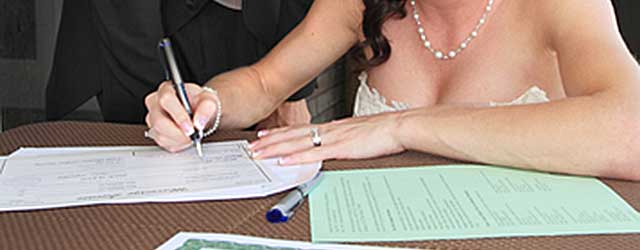Don’t let the paperwork trip you up; no matter what type of ceremony you choose to have, there are certain requirements you must meet and things you have to do…

This is a two-page form that you can download from gro-scotland.gov.uk or obtain from a registrar’s office. You can submit completed forms up to 15 days before the date of your wedding, although this is cutting it fine and you may be faced with having to postpone. You should really aim to complete and submit the forms a minimum of four weeks prior to the big day (six weeks is recommended if you’ve been married before).
The forms must be submitted to the registrar for the district in which the marriage is to take place (not necessarily your local office) along with the following documentation: fee (currently £30 each); your birth certificate; divorce certificate (if either party was previously married); death certificate (if a previous partner has died); and any additional documentation if one of you is not normally domiciled in the UK.
The registrar will then enter your names and date of marriage into a Marriage Notice Book and onto a list of planned marriages. This is displayed for 14 days, during which time the public can inspect it. If the registrar is satisfied that there is no legal impediment to marriage, he/she will then prepare the Marriage Schedule.
No marriage can proceed without this document, so sit up at the back and pay attention to the protocol!
Religious ceremonies:
Either bride or groom must collect the Schedule in person not more than one week prior to the big day; it cannot be collected on your behalf. You must give it to your celebrant prior to the wedding.
Civil ceremonies:
The registrar will not issue a Schedule but hold onto it in readiness for the ceremony.
You must arrange for two people, aged 16 or over, to be present at your marriage to act as witnesses.
Immediately after the ceremony, the Schedule must be signed in black fountain pen by the bride, the groom, the person performing the marriage and the two witnesses.
This registers the wedding and allows the registrar to issue the marriage certificate.
Religious ceremonies (including Humanist and Interfaith):
The Schedule must be returned to the registrar within three days. If you are going on honeymoon straight after the wedding and won’t be able to return the Schedule personally, you should assign this role to someone responsible!
Civil ceremonies:
The registrar will keep the Schedule and register the marriage.








